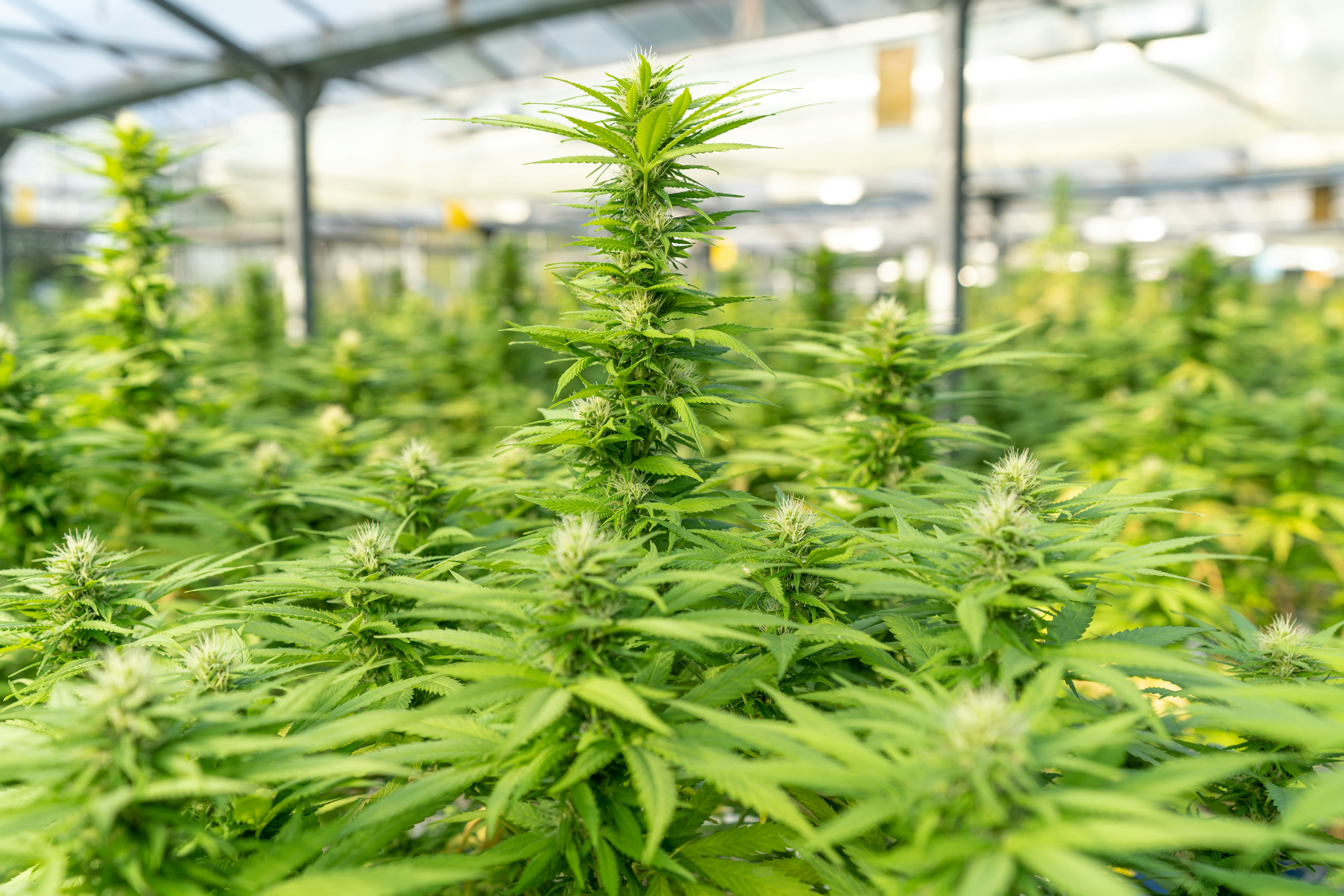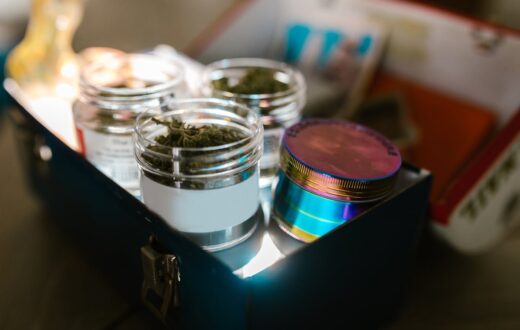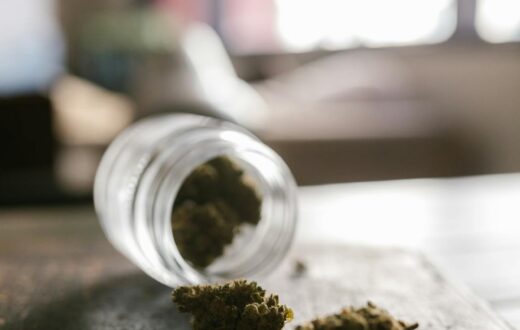Introduction to Colombian Gold
Colombian Gold is a renowned cannabis strain that originates from the highland regions of Colombia. This particular strain has deep historical roots, with its cultivation dating back several decades, and it has gained prominence within the cannabis community for its unique characteristics. Colombia’s ideal growing conditions, including a warm climate and fertile soil, contribute to the exceptional quality of this strain, making it a favorite among both amateur and professional cannabis growers.
One of the standout features of Colombian Gold is its flavor profile, which is often described as earthy and musky, with notes of lemon and tropical fruit. This diverse flavor palette not only enhances the overall smoking experience but also adds to the strain’s appeal among those who appreciate complex flavors in their cannabis. In addition to its aromatic qualities, Colombian Gold is recognized for its potent effects. It typically produces a euphoric and uplifting high, making it an excellent choice for social gatherings or creative endeavors.
The reputation of Colombian Gold extends beyond its impressive flavor and effects. It is often viewed as a legacy strain among cannabis connoisseurs and growers because of its historical significance and the cultural context from which it emerged. Many growers are drawn to Colombian Gold not only for its qualities but also for its potential to produce high yields and robust plants. As a regular strain, it allows growers to explore both male and female phenotypes, adding a layer of complexity to cultivation. This versatility has made it a subject of interest for those looking to understand how to grow Colombian Gold regular strain effectively, ultimately enhancing the cultivation experience for enthusiasts and professionals alike.
Understanding Regular Strains vs. Feminized Strains
The world of cannabis cultivation offers a diverse array of options for growers, notably the distinction between regular strains and feminized strains. Regular strains are bred from natural cannabis plants that can produce both male and female specimens. In contrast, feminized strains are specifically developed to yield only female plants, which are the ones that produce the sought-after buds.
One of the key advantages of cultivating regular strains, such as the Colombian Gold regular strain, is genetic diversity. By growing both male and female plants, cultivators have the opportunity to engage in selective breeding. This can lead to the creation of unique hybrids with improved characteristics. Regular strains, by their nature, support genetic variability and help maintain the genetic lineage of cannabis. Such diversity is crucial for preservation, particularly in established landrace strains.
Additionally, growing regular strains allows growers to harvest male plants that can be utilized for breeding purposes. Male plants play a pivotal role in cannabis propagation as they can pollinate females, resulting in seeds that may exhibit new traits. For recreational or medicinal growers interested in expanding their cultivation options, understanding how to grow Colombian Gold regular strain can be beneficial for selecting desirable traits in future generations.
Moreover, regular strains typically exhibit more robust resistance to pests and diseases when compared to their feminized counterparts. This resilience can be attributed to their wide genetic pool. When it comes to grow cycles, regular strains often offer consistency and stability, which can be advantageous for seasoned growers seeking reliable outcomes. In summary, while feminized strains are appealing for beginner cultivators aiming for a straightforward yield, regular strains possess distinctive benefits that cater to a more experimental approach in cannabis cultivation.
Ideal Growing Conditions for Colombian Gold
To successfully cultivate the Colombian Gold regular strain, understanding its preferred environmental conditions is vital. Colombian Gold thrives under a well-balanced combination of light, temperature, humidity, and soil quality. Each aspect contributes significantly to the plant’s health and yield.
Light requirements are crucial for optimal growth. Colombian Gold requires a lot of light exposure, ideally around 12 to 14 hours of bright, direct sunlight each day. For indoor growers, using high-quality LED grow lights or HPS lights can mimic natural sunlight effectively. Ensuring that the light is positioned at an appropriate distance from the plants will prevent light burn while providing adequate illumination for vigorous growth.
Temperature plays a critical role in the development of Colombian Gold. The ideal temperature range during the day is between 70°F to 85°F (21°C to 29°C), with slightly cooler temperatures at night, around 60°F to 70°F (15°C to 21°C). Maintaining this temperature range will ensure that the plants remain healthy and grow efficiently.
Humidity levels should be controlled to support the varying stages of growth. During the vegetative phase, a relative humidity (RH) of 40% to 70% is suitable, while in the flowering phase, a lower RH of 40% to 50% can help prevent mold and mildew. Monitoring humidity can be achieved using hygrometers and by employing dehumidifiers or humidifiers as needed.
Soil quality is another essential factor when learning how to grow Colombian Gold regular strain. This strain prefers well-draining soil enriched with organic matter. A pH level of around 6.0 to 7.0 is optimal, promoting nutrient uptake. Adding amendments like compost or worm castings can enhance soil fertility and structure.
Whether growing indoors or outdoors, maintaining these ideal conditions will ensure that your Colombian Gold plants flourish, maximizing both health and yield.
Propagation Techniques for Colombian Gold
Propagating Colombian Gold, a revered cannabis strain known for its robust growth and exceptional yield, requires a keen understanding of effective methods. Two primary techniques for propagation are seed germination and clone cutting. Each method offers distinct advantages, and understanding these will enable growers to maximize their cultivation success rate.
To begin with, germinating Colombian Gold seeds can be an exciting initial step. It is essential first to select high-quality seeds, as this ensures a strong genetic lineage. The paper towel method is one effective technique for germination. Place the seeds between two damp paper towels and place them inside a sealed plastic bag, ensuring that they remain moist but not soaked. Store this setup in a warm, dark place, as temperatures between 70 to 85°F (21 to 29°C) support germination. Check every couple of days to maintain moisture levels. Usually, seeds will sprout within a week. Once germinated, carefully transfer the seeds into small pots filled with nutrient-rich soil, ensuring they are covered with light soil to encourage healthy growth.
Alternatively, for growers who wish to keep their plants genetically identical, cloning is a practical choice. Select a healthy Colombian Gold mother plant and take cuttings from the stems. A cutting should be around 6 to 8 inches long, preferably from the lower part of the plant where stems are more vigorous. Dip the end of the cutting in a rooting hormone, which can significantly enhance root formation. Next, plant the cutting in a small pot filled with a sterile growing medium, such as rock wool or seed starter mix. Maintain high humidity around the clones by covering them with a humidity dome or plastic bag. Roots should develop within one to two weeks, at which point they can be transitioned to a regular growing environment.
Both methods provide an excellent foundation for cultivating Colombian Gold and can significantly enhance the chances of a successful harvest. By mastering these propagation techniques, growers can increase their yield and ensure the consistency of their crop.
Nutrient Requirements and Feeding Schedule
To successfully cultivate Colombian Gold regular strain, understanding and fulfilling its nutrient requirements is vital. This strain thrives best when supplied with a balanced mix of macronutrients and micronutrients throughout its growth cycle. The key macronutrients include nitrogen (N), phosphorus (P), and potassium (K), while secondary nutrients such as calcium, magnesium, and sulfur also play important roles in promoting healthy plant development.
Nitrogen is particularly crucial during the vegetative stage, as it fosters vigorous leaf growth and overall plant vigor. A typical feeding schedule might include higher nitrogen levels around weeks three to six of the vegetative phase. A suggested nutrient ratio during this period could be 3-1-2 (N-P-K), ensuring that the plants receive the adequate nitrogen needed. As the plants transition into the flowering stage, reducing nitrogen and increasing phosphorus and potassium is essential to support bud formation. During this time, a typical nutrient ratio could shift to around 1-3-3.
Calcium and magnesium are also significant, especially for preventing deficiencies that could lead to poor plant health. These can generally be fed in smaller amounts throughout both growth stages, ensuring nutrient balance without creating excess. Micronutrients, such as iron, zinc, and manganese, should be administered as needed, particularly if deficiencies appear, which manifests through yellowing or interveinal chlorosis.
It is equally important to adjust your feeding schedule according to the growth method employed, whether soil or hydroponics. Monitoring plant responses to nutrient application can guide adjustments. By providing the Colombian Gold regular strain with the right nutrient mix in conjunction with a careful feeding schedule, growers can achieve optimal growth and successful harvests.
Pest and Disease Management
Effective pest and disease management is crucial for ensuring the health and vitality of the Colombian Gold regular strain. This strain, recognized for its resilience and potency, is still vulnerable to several pests and diseases that can adversely affect growth and yield. Common pests that may infest Colombian Gold include spider mites, aphids, and thrips. These insects can cause significant damage by feeding on plant sap, leading to weakened plants and stunted growth. Regular monitoring of your plants is essential for early detection to prevent infestations from becoming severe.
To manage these pests, organic solutions such as neem oil or insecticidal soap can be employed. These substances are effective yet gentle on beneficial insects, which help maintain a balanced ecosystem in your grow area. Additionally, employing companion planting strategies can deter pests naturally. Always aim to maintain clean growing environments, as cleanliness can significantly reduce the chances of pest problems.
Diseases such as powdery mildew and root rot are also potential threats to Colombian Gold. Powdery mildew presents as white, powdery spots on leaves and can spread quickly under humid conditions. To prevent this disease, ensure that your plants have adequate air circulation and do not overcrowd them. For those experiencing root rot, proper watering techniques are paramount. Overwatering can lead to waterlogged soil, creating a breeding ground for pathogens. Use well-draining soil and pots with drainage holes to establish a healthy root system.
In conclusion, maintaining the health of Colombian Gold regular strain requires vigilant monitoring and effective pest and disease management strategies. By implementing preventive measures and being proactive in identification and treatment, growers can ensure that their plants thrive throughout the growing cycle. This commitment to care will ultimately lead to a robust harvest of this exceptional strain.
Harvesting and Curing Colombian Gold
Understanding when to harvest the Colombian Gold regular strain is vital for maximizing its flavor and potency. Typically, growers should observe the trichomes on the buds, which should transition from clear to a cloudy or milky appearance, indicating peak potency. The pistils, or hair-like structures, will also change from white to a darker color, generally a mix of orange or brown, signaling that the plant is nearing its harvest window. Utilizing a jeweler’s loupe or magnifying glass can aid in this inspection, ensuring the grower has a well-timed harvest.
Once the Colombian Gold strain has been harvested, the next critical phase is curing. This process involves drying and storing the buds in a manner that enhances their flavor profile and maintains their potency. Begin by trimming excess leaves from the buds while they are still moist, allowing for a smoother, more enjoyable smoking experience. It is recommended to hang the buds upside down in a dark, well-ventilated area for approximately 7 to 14 days. This initial drying period is crucial; the humidity should be around 45-55% to prevent mold.
Following the drying phase, the curing process can commence. This involves placing the dried buds in airtight containers, such as glass jars, which should be opened daily for the first week to exchange air and release moisture. Gradually, the frequency of this process can decrease over time. Allowing the Colombian Gold strain to cure for at least 2-4 weeks will significantly enhance its flavor, aroma, and overall quality. During this period, terpenes and cannabinoids continue to develop, leading to a more flavorful and potent product.
Proper curing and storage techniques are pivotal for preserving the unique characteristics of Colombian Gold, providing growers with a superior harvest that reflects the hard work invested in cultivating this exceptional strain.
Creating a Successful Grow Plan
Developing a comprehensive grow plan is essential for successfully cultivating Colombian Gold regular strain. A tailored grow plan allows growers to streamline their operations, set realistic timelines, and prepare for every phase of the growth cycle. The first step in creating this plan is determining the specific goals for the cultivation. Establish whether the objective is to maximize yield, optimize cannabinoid content, or focus on maintaining quality. Each of these goals will influence various decisions throughout the growing process.
Next, identify the grow environment that best suits the Colombian Gold regular strain. Consider whether indoor or outdoor cultivation is more appropriate, keeping in mind the strain’s preferences for warm temperatures and ample sunlight. Indoor growers must outline their setup, including lighting, ventilation, and humidity control, while outdoor cultivators need to assess the local climate and potential natural obstacles. Such considerations will ensure that conditions remain optimal for growth.
Establishing a timeline is another crucial aspect of a successful grow plan. For Colombian Gold regular strain, the growth cycle typically spans several months, involving germination, vegetative growth, flowering, and harvesting stages. It is advisable to create a detailed calendar that outlines expected milestones, such as when to transplant seedlings, initiate the flowering phase, and finally harvest. This timeline helps maintain focus throughout the growth journey and allows growers to monitor progress effectively.
Lastly, regular assessments of progress and flexibility within the grow plan are important. Conditions may shift due to environmental factors or unforeseen challenges. Being prepared to adjust elements of the plan can significantly enhance the chances of achieving successful cultivation. With a well-defined grow plan, growers can ensure they are adequately prepared for the unique requirements of Colombian Gold regular strain and ultimately make the cultivation process efficient and fruitful.
Conclusion and Final Tips for Successful Cultivation
Successfully cultivating the Colombian Gold regular strain involves a combination of understanding its specific growth requirements, providing optimal environmental conditions, and applying effective cultivation techniques. Throughout this guide, we have highlighted the essential aspects of growing this strain, from selecting the right seeds to maintaining proper humidity and temperature levels. Attention to detail in these areas will foster healthy plant growth and ultimately enhance yield quality.
To recap, the Colombian Gold regular strain thrives in warm, humid environments and benefits greatly from adequate light exposure. A structured feeding regime, appropriate to the plant’s flowering stage, is also vital. Utilizing organic fertilizers can significantly boost plant health and soil quality, leading to richer flavors in the final product. Moreover, making use of training techniques like topping and low-stress training can help manage plant height and promote full light exposure to all parts of the plant.
For growers seeking further insights on how to grow Colombian Gold regular strain, exploring online forums and communities can provide invaluable support. These platforms often serve as a hub for sharing personal experiences, troubleshooting common issues, and exchanging best practices. Additionally, monitoring the plants regularly for pests or diseases can help in preventing major setbacks during the growing cycle. Consider implementing an integrated pest management approach to minimize risks.
Lastly, ensure continuous education by reading credible resources and possibly attending workshops or local grower meetups. Gaining knowledge about evolving cultivation techniques and strain developments can enhance your experience as a grower. By incorporating these practices and actively engaging with the broader growing community, you set yourself up for a rewarding cultivation journey with your Colombian Gold regular strain.














